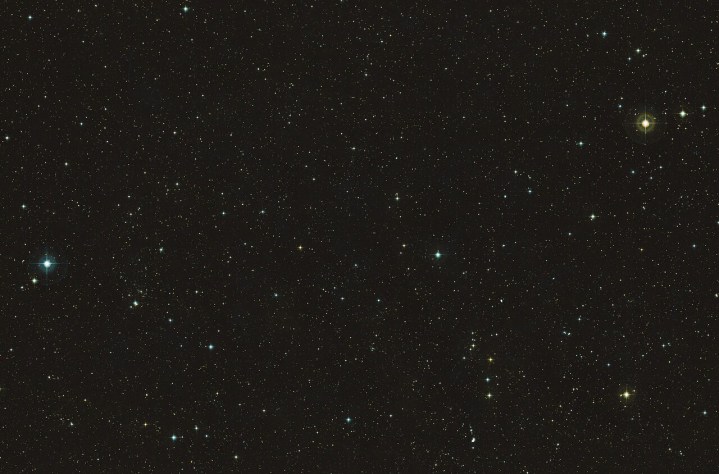Select Language:
Advanced instruments like the James Webb Space Telescope are enabling researchers to delve deeper into the universe’s past than ever before, uncovering incredibly ancient structures, including galaxies that formed within the first few hundred million years after the Big Bang. Recently, astronomers focused on galaxy JADES-GS-z14-0, the most distant galaxy detected, and made a surprising discovery: signs of oxygen.
This galaxy is located so far away that the light from it has traveled 13.4 billion years to reach us, providing a glimpse into its appearance just 300 million years after the universe began. In such a nascent galaxy, scientists typically expect to find primarily hydrogen and helium—key elements present in the universe’s earliest formations. However, observations made with the Atacama Large Millimeter Array (ALMA) revealed the presence of oxygen, a finding that was unforeseen at such an early stage in cosmic history.
“It’s as if we’ve encountered a teenager when we expected only infants,” remarked lead researcher Sander Schouws from Leiden Observatory. “These findings indicate that the galaxy formed and matured at an unexpectedly rapid pace, contributing to a growing body of evidence that galaxy formation occurs much quicker than previously thought.”

ESO/Digitized Sky Survey 2. Acknowledgment: Davide De Martin
Since the James Webb Space Telescope began examining some of the universe’s earliest galaxies, scientists have begun to question whether their theories about the early universe might be inaccurate or at least incomplete. It now appears that the cosmos during its infancy is much more dynamic and luminous than previously imagined, with galaxies emerging and evolving at an unexpected pace, leaving researchers puzzled as to why this is the case.
“I was amazed by the unexpected results, as they offer new insights into the initial stages of galaxy evolution,” said researcher Stefano Carniani from the Scuola Normale Superiore in Pisa, Italy. “The fact that a galaxy can be considered mature at such an early time raises crucial questions about how and when galaxies came to be.”
The oxygen was detected using spectroscopy, a technique that involves separating light from distant objects into various wavelengths to identify which wavelengths have been absorbed. By analyzing these absorption lines, scientists can deduce the composition of an object from afar. In this instance, two independent research teams identified signs of oxygen in this galaxy after examining data from ALMA, a ground-based array of 66 radio telescopes located in Chile that operate in unison.
This data from ALMA also served to confirm the remarkable distance of the galaxy. “Although the galaxy was initially discovered by the James Webb Space Telescope, ALMA was essential for confirming and accurately measuring its extensive distance,” explained Rychard Bouwens from Leiden Observatory. “This illustrates the incredible collaboration between ALMA and JWST in enhancing our understanding of the earliest galaxies’ formation and evolution.”
These findings will be detailed in an upcoming paper in Astronomy & Astrophysics, as well as another paper in The Astrophysical Journal.





